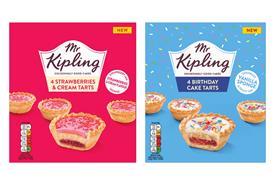Brand manufacturers will have to rethink how they price and package healthier products if they want to convert infrequent purchasers into loyal shoppers, according to Nielsen.
In a survey of 1,011 British consumers, seen exclusively by The Grocer, 97% said they had at some point bought either products with natural health benefits or those that had been fortified.
However, the bulk of these shoppers were buying healthier products 'sometimes' or 'rarely', rather than 'regularly'.
Foods that were labelled wholegrain or high fibre were the most commonly bought healthier foods, with 93% of consumers having bought such items. However, only 48% bought these products regularly.
Cholesterol-reducing oils and margarines were the second-most popular purchase with 78% having bought a product, but only 26% bought from this category regularly. Sixty one per cent of people had bought cereals with added folate, but just 9% had done so regularly.
"What manufacturers really have to be aware of in order to drive loyalty is pricing," said Louise Boitoult, business insight director at Nielsen.
"Many charge a slight premium on standard healthy products but, even if it is just a few pence, there is only so much price tolerance consumers will take. They may pay to trial it but are they prepared to pay that extra over the long term?"
Manufacturers should not shy away from flagging up clear health claims on their packaging for fear of confusing shoppers with too many labels, she added. "To encourage regular purchase the packaging must signal the benefits to consumers, whether it's intrinsically healthy or fortified.
"For instance, the number of people who say they sometimes or occasionally buy cereal with added folate has grown by a quarter since 2005. But in fact many cereals have been fortified with folate since the 1990s. Consumers are now looking out for the fortification, and reading and understanding food labelling much better."omega-3 labels mislead
Supermarkets and food companies are making claims about Omega-3 on their products that "are inaccurate at best or just plain wrong", according to Which?
The consumer group analysed the Omega-3 content of fortified bread, milk, yoghurt and fruit juice products, and compared the results with what was stated on their labels.
It found levels of Omega-3 in products ranged from 1,000% more to 98% less than the amount stated on the label.
Which? also said some products contained so little Omega-3 that large quantities would have to be consumed to make a difference to the consumer's diet.
It claimed a person would have to drink 1.5 litres a day of Tesco's Healthy Living pomegranate juice drink with added Omega-3, or 11 loaves of Asda's 400g Healthy wholegrain bread, to get the RDI of the healthy fat.
















No comments yet